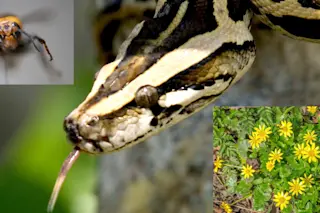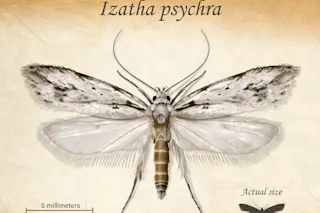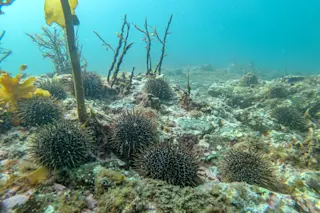Predators, conventional wisdom holds, seek out and strike down the very young, the old, and the sick and injured, leaving the strongest animals to pass on their genes to future generations. But at least one species of predator, some biologists have recently found, is at odds with the image of carnivores as cullers of the unfit. Tengmalm’s owls in the forests of Scandinavia stalk not the weakest prey but the fattest.
Biologist Vesa Koivunen and his colleagues at the University of Turku in Finland examined 21 of the owls’ nests spread out over 500 square miles of forest and pasture. Because the owls store their kills during the breeding season to ensure an ample supply of food for their young, the biologists were able to examine caches of intact prey, invariably rodents such as voles and shrews. They recorded the size, weight, sex, maturity, and general condition of each and compared these measurements with those of the general prey population, determined from animals caught in traps within the owls’ ranges.
Our comparison, says Koivunen, showed that Tengmalm’s owls did not typically kill substandard animals doomed to die in any case, as mammalian carnivores, such as lions, generally would. In fact, he says, the luckless victims tended to be fatter than their fellows in the field, even though they were below average in size.
Koivunen speculates that these smaller individuals may be subordinate members of the rodent hierarchy. Larger, more dominant animals tend to occupy prime nesting sites, which offer cover from sharp avian eyes. The subordinates are stuck with the open, grassy areas most thoroughly patrolled by owls. The owls have little incentive to seek out weak or sickly specimens, says Koivunen, since fat rodents in grassy fields are easily spotted.
Why are these subordinate voles chubbier than their superiors? It may be that the dominant voles consume more energy by busily defending their high-quality territories. Small voles may burn less fat or actually accumulate more by taking more time to eat, Koivunen suggests. In any event, he suspects that the predilection of Tengmalm’s owls for healthy animals may be shared by other predators and that such habits must influence prey populations in ways that the weeding out tactics of other carnivores do not. Dominance struggles and reproductive strategies, he believes, are two areas of probable impact ripe for further study. It is a very complex system, and we have much more to learn.














